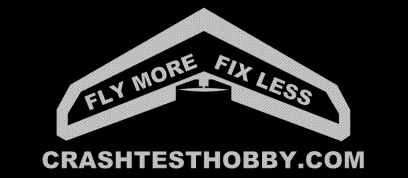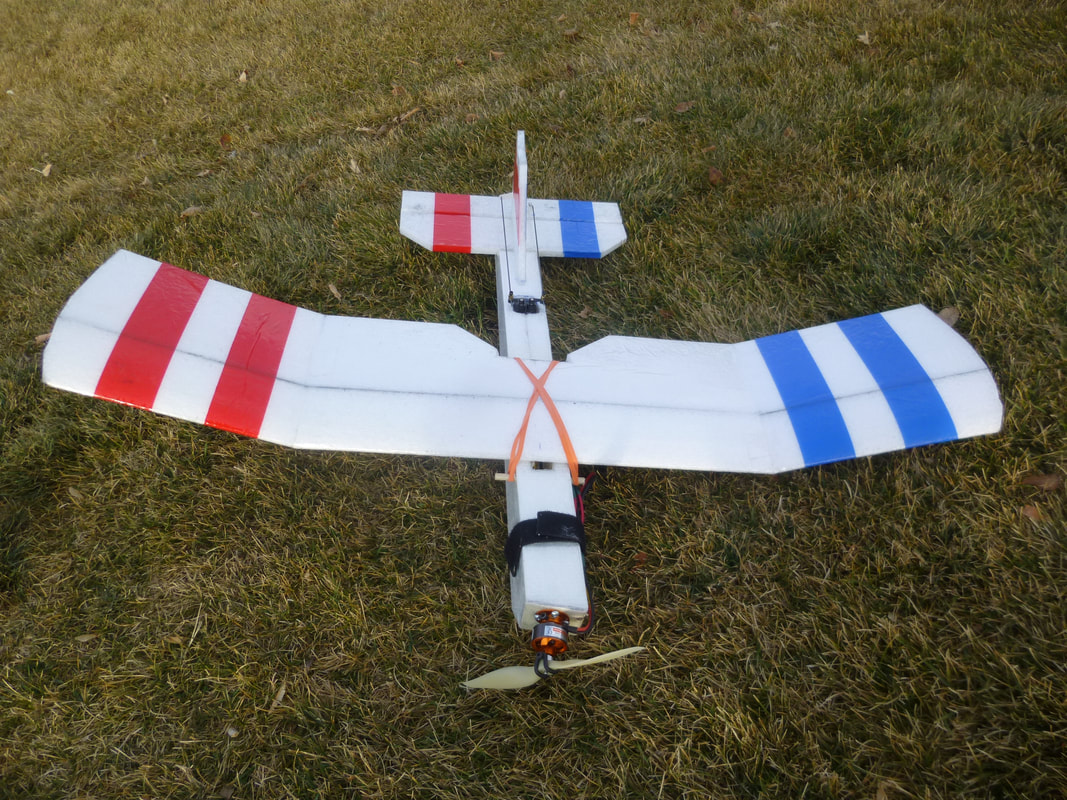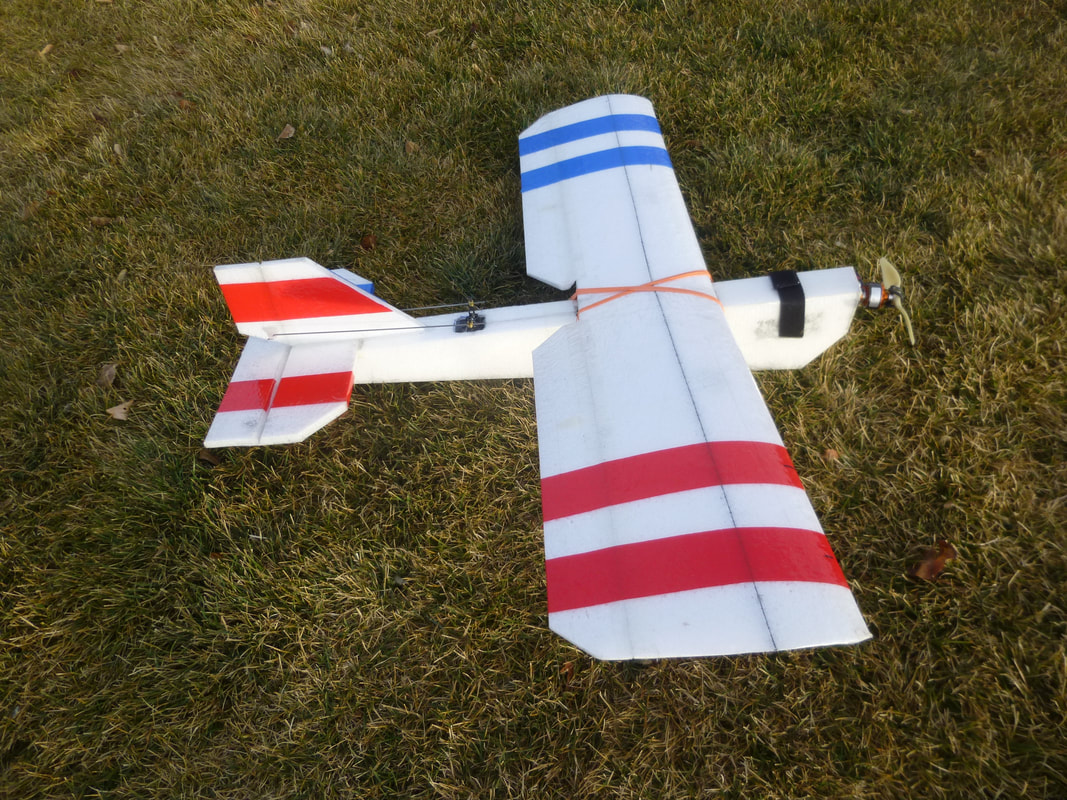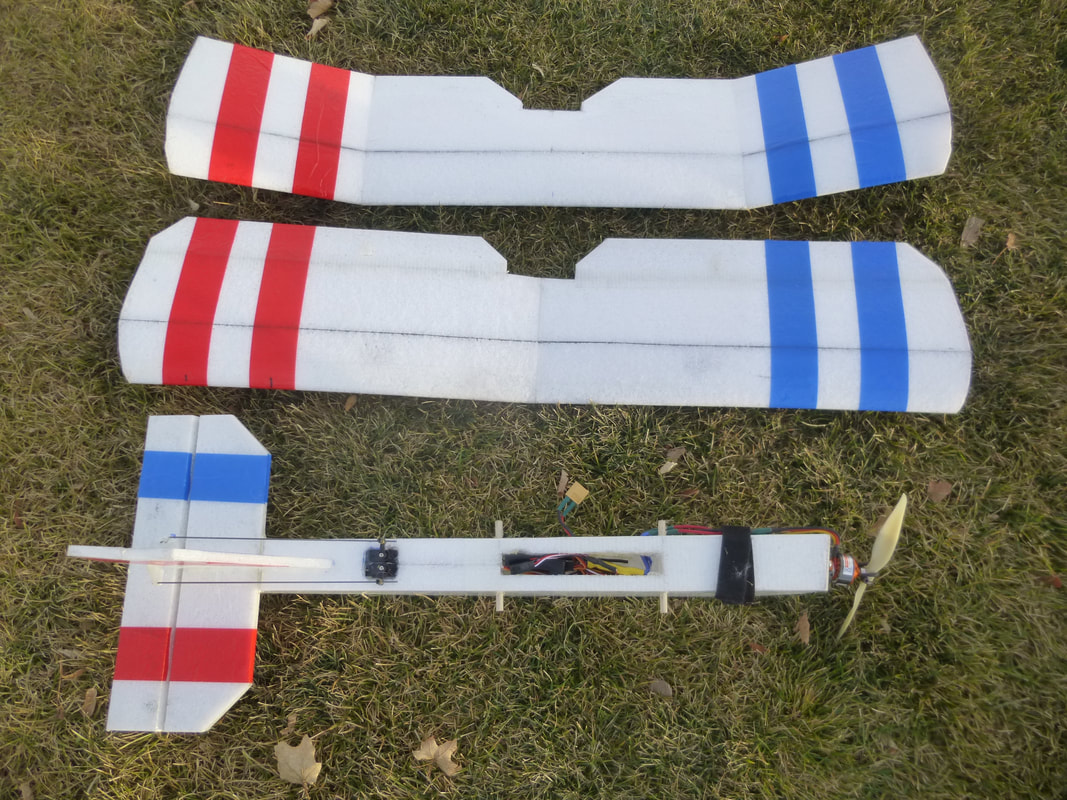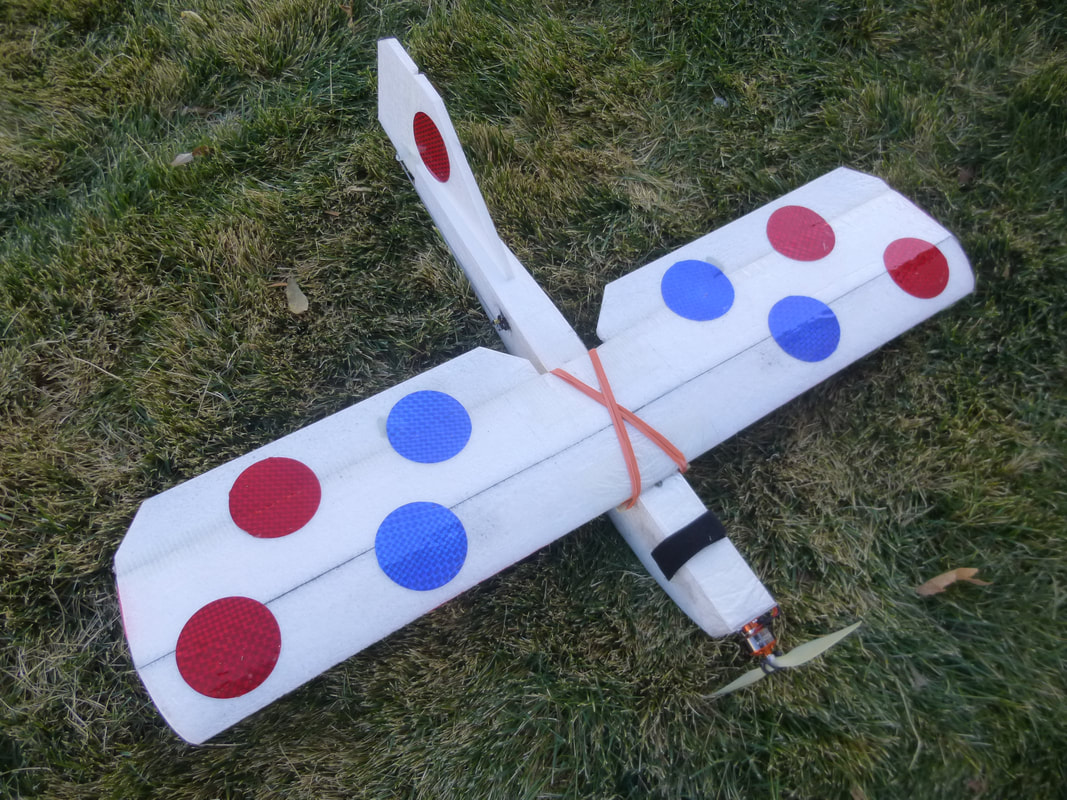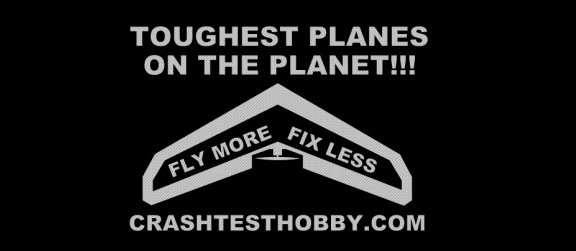We now offer 4 variations to the Pelican kit.
The 36″ Pelican is a more compact version of our Albatross slow flyer. Smaller in size it can be faster and more aerobatic than the Albatross with the same motor set up. If you use a small motor with a 2S battery and keep it light it can be gentle and slow. You can also laminate it and fly it with a 3S battery for performance and aerobatics. I have flown my Pelicans hundreds of times in all kinds of conditions. It is one tough little plane because of its solid EPP wing and solid EPP fuselage.
The kit comes with the nose of the fuselage precut angled 5 degrees down and 8 degrees to the right to compensate for prop torque and aerodynamic lift. the CG needs to be 5 cm or 2" back from the front of the wing. The kit comes with enough laminate for the fuselage. Add a 10 feet of laminate to your order if you want to laminate the entire plane.
We now have a QP flying plank wing variation of the Pelican. It is a fantastic flyer and now one of my favorite park planes. The build is done with the stock Pelican w/ailerons kit. The ailerons have now become elevons since there is no elevator. The fuselage, wing and rudder are laminated for speed. The working rudder makes the plane able to snap roll and spin. With a 3S battery and a 2812-1534 kv motor this is a quiet fast flyer that feels a lot like a pylon racer. Flying speed is up to 70 mph with the stock motor. Because it is a plank wing, the CG moves forward to 3 cm or 1-3/8" back from the front of the wing. We recommend you add a 10' laminate to cover wing and rudder when you order.
Shown above is the Pelican with a polyhedral wing and aileron wing. Which is best? If you are beginner I recommend the polyhedral wing. The aileron wing is fun for more advanced aerobatics. We offer a two wing kit for those of you who can't decide. The flying wing variation is a lot of fun and a great set up for the flying wing crowd.
How does self stabilization work? The poly wing is the king of self stabilization as long as it is built light. The poly wing wants to be level so if rolled to one side it will try to roll itself back to flat and level flight. The front to back stabilization is based on speed. As you trim in your plane you will basically be setting what speed you want it to fly. Let's say you set the speed at 25 mph. If the plane goes slower than that the nose will drop until the plane comes up to the 25 mph. If it goes faster than 25 mph it will climb until the plane slows down to 25 mph where the elevator was set for the speed you want. We have found that setting the speed for stable flight makes the Pelican very easy to fly.
You have to match the motor and power to the plane. We have found that a 2S battery with a 2812-1534 motor and a 7x6 prop is an inexpensive set up that gives the right amount of power for slow flight for a small park. Upgrading the battery to a 3S with the same motor and prop makes the plane fast and aerobatic.
We recommend rudder / aileron mixing for those buying the two wing kits. In order to have the fuselage able to fly either wing without having to reprogram the radio I have plug my ailerons into the rudder plug on the receiver and my rudder into the aileron plug on the receiver. I then mix the ailerons to rudder so I can switch wings without having to reprogram the radio. This does give rudder with the ailerons in normal flight but if I want clean aileron rolls I use the left rudder stick. The plane flies the same from a pilot point of view other than the rudder / aileron mix makes the plane turn faster and more aerobatic.
The 34″ Pelican is made out of the same tough EPP foam as our combat wings making it one of the most durable trainers on the market. The entire EPP fuselage acts as a shock absorber and all the radio is buried in the foam to offer excellent protection. The low speed makes this a great plane for learning to fly. It is designed to fly slow and is great for small parks or fields where noise is an issue. This is one of the quietest planes I have flown. Many advanced flyers are flying this plane. It is just fun to fly. Try one and see for yourself.
We originally designed the Pelican with a pod mounted motor for camera mounting for the FPV flyers but having a pod motor on this size of a plane affected the launching and stability of the plane. I went back and cut the old motor pods off of all of my old Pelicans and put the motors on the noses of the planes and am pleased with how much easier they are to launch and fly. Pods are no longer included in the kit for this reason.
Please log in and join the discussion at: RCGroups.com "EPP Tough - the best slowflyers on the planet"
The kit comes with the nose of the fuselage precut angled 5 degrees down and 8 degrees to the right to compensate for prop torque and aerodynamic lift. the CG needs to be 5 cm or 2" back from the front of the wing. The kit comes with enough laminate for the fuselage. Add a 10 feet of laminate to your order if you want to laminate the entire plane.
We now have a QP flying plank wing variation of the Pelican. It is a fantastic flyer and now one of my favorite park planes. The build is done with the stock Pelican w/ailerons kit. The ailerons have now become elevons since there is no elevator. The fuselage, wing and rudder are laminated for speed. The working rudder makes the plane able to snap roll and spin. With a 3S battery and a 2812-1534 kv motor this is a quiet fast flyer that feels a lot like a pylon racer. Flying speed is up to 70 mph with the stock motor. Because it is a plank wing, the CG moves forward to 3 cm or 1-3/8" back from the front of the wing. We recommend you add a 10' laminate to cover wing and rudder when you order.
Shown above is the Pelican with a polyhedral wing and aileron wing. Which is best? If you are beginner I recommend the polyhedral wing. The aileron wing is fun for more advanced aerobatics. We offer a two wing kit for those of you who can't decide. The flying wing variation is a lot of fun and a great set up for the flying wing crowd.
How does self stabilization work? The poly wing is the king of self stabilization as long as it is built light. The poly wing wants to be level so if rolled to one side it will try to roll itself back to flat and level flight. The front to back stabilization is based on speed. As you trim in your plane you will basically be setting what speed you want it to fly. Let's say you set the speed at 25 mph. If the plane goes slower than that the nose will drop until the plane comes up to the 25 mph. If it goes faster than 25 mph it will climb until the plane slows down to 25 mph where the elevator was set for the speed you want. We have found that setting the speed for stable flight makes the Pelican very easy to fly.
You have to match the motor and power to the plane. We have found that a 2S battery with a 2812-1534 motor and a 7x6 prop is an inexpensive set up that gives the right amount of power for slow flight for a small park. Upgrading the battery to a 3S with the same motor and prop makes the plane fast and aerobatic.
We recommend rudder / aileron mixing for those buying the two wing kits. In order to have the fuselage able to fly either wing without having to reprogram the radio I have plug my ailerons into the rudder plug on the receiver and my rudder into the aileron plug on the receiver. I then mix the ailerons to rudder so I can switch wings without having to reprogram the radio. This does give rudder with the ailerons in normal flight but if I want clean aileron rolls I use the left rudder stick. The plane flies the same from a pilot point of view other than the rudder / aileron mix makes the plane turn faster and more aerobatic.
The 34″ Pelican is made out of the same tough EPP foam as our combat wings making it one of the most durable trainers on the market. The entire EPP fuselage acts as a shock absorber and all the radio is buried in the foam to offer excellent protection. The low speed makes this a great plane for learning to fly. It is designed to fly slow and is great for small parks or fields where noise is an issue. This is one of the quietest planes I have flown. Many advanced flyers are flying this plane. It is just fun to fly. Try one and see for yourself.
We originally designed the Pelican with a pod mounted motor for camera mounting for the FPV flyers but having a pod motor on this size of a plane affected the launching and stability of the plane. I went back and cut the old motor pods off of all of my old Pelicans and put the motors on the noses of the planes and am pleased with how much easier they are to launch and fly. Pods are no longer included in the kit for this reason.
Please log in and join the discussion at: RCGroups.com "EPP Tough - the best slowflyers on the planet"
|
Included in the Pelican kit with the polyhedral wing:
|
Included in the Pelican kit with the aileron wing:
|
